Child development is a fascinating journey, and one of the most visually rewarding aspects of this journey is observing the evolution of children’s drawings. From the early scribble stage to more realistic drawings, the stages of drawing development offer a window into a child’s mind, showcasing their cognitive, social, and artistic skills growth. This article delves into these developmental milestones and the importance of art activities in a child’s life.
The Scribble Stage: First Step in Artistic Development
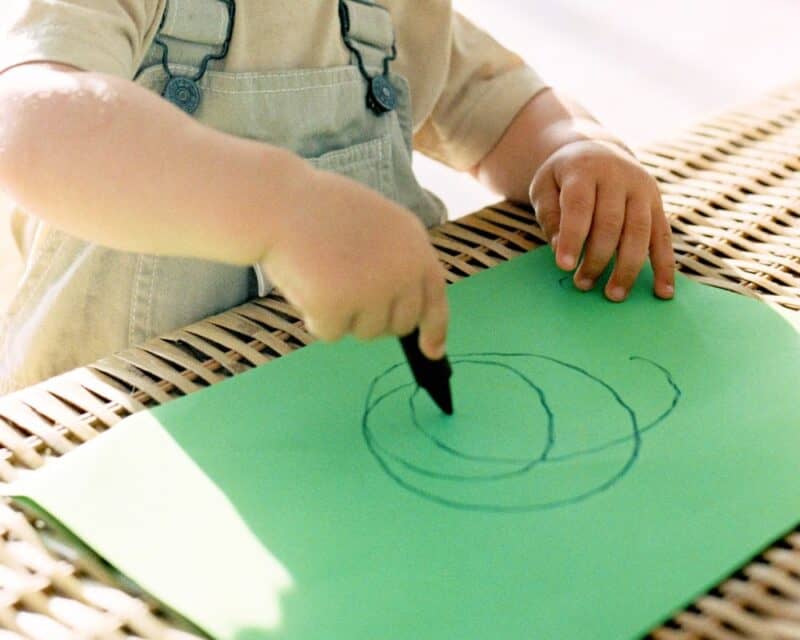
The scribbling stage is a significant part of a child’s artistic and developmental journey, often starting when very young children first hold a crayon. This stage is characterized by seemingly random marks, typically made by a child’s fist gripping the crayon. However, these marks are the first steps towards significant developmental milestones.
Understanding the Scribble Stage
- Age and Development: This stage usually begins around 18 months and can last until the child is about three years old. During this time, children explore their ability to make marks and see the visual feedback from their actions.
- Drawing Skills: Initially, the scribbles may appear as uncontrolled and aimless movements. But gradually, these scribbles become more deliberate, and patterns like vertical lines, circles, and waves emerge, showcasing the child’s developing drawing skills.
- Physical and Cognitive Development: This stage is crucial for developing fine motor control, as the child learns to coordinate their hand movements with what they see. Occupational therapists emphasize the importance of this stage in developing early writing skills and cognitive abilities.
Encouraging Development in the Scribble Stage
- Provide Various Art Materials: Introduce different crayons, markers, and papers. Thick, easy-to-grip crayons are ideal for young children. Experimenting with various materials adds a new dimension to the child’s drawing experience.
- Create a Fun Environment: Make drawing a fun experience. Don’t focus on the result but on the process. Celebrate each creation to encourage their continued interest in art.
- Observe and Interact: Pay attention to your child’s drawings. You might notice themes or patterns emerging. Engage with your child by talking about their drawings and encouraging them to explain what they’ve created.
Recognizing the Transition to the Next Stage
- Developing Patterns and Control: As children near the end of this stage, you’ll notice more patterns and control in their scribbles. Similar scribbles might start to take shape as they represent objects from real life or their imagination.
- Emergence of Shapes and Lines: Look for the emergence of basic shapes and lines. These are signs that your child is transitioning to the pre-schematic or preschematic stage, where their art becomes more representational.
The Role of Parents and Caregivers
- Encouragement and Support: Your role in this stage is to provide support and encouragement. Remember, each child develops at their own pace. Avoid comparisons and let your child enjoy their artistic journey.
- Consulting Experts: If you have concerns about your child’s development, consulting an occupational therapist can be beneficial. They can provide tailored advice and strategies to support your child’s developmental stages.
Pre-Schematic and Preschematic Stages: Emergence of Shapes and Ideas

The pre-schematic stage, typically around 3 to 4 years of age, marks a significant transition in a child’s artistic development. It’s a time when the indiscriminate scribbles of the earlier stages start to take on more distinct forms and meanings.
Key Characteristics of the Pre-Schematic Stage
- Emergence of Recognizable Forms: Children begin to draw simple yet recognizable forms. This is often the first time they attempt to draw people, usually starting with basic shapes for body parts, like a circle for the head and lines for the arms and legs.
- Use of Whole Hand: At this stage, children often still use their whole hands to draw, but there is a noticeable improvement in their control and intention.
- First Attempts at Representing the World: The drawings may still be simplistic, but they represent a big leap in cognitive development. Children start to express their understanding of the world around them.
Encouraging Artistic Growth in the Pre-Schematic Stage
- Supporting Drawing Efforts: Encourage children to draw people, animals, and objects they see in their environment. This enhances their drawing skills and aids their cognitive understanding of different elements in their world.
- Recognizing the Importance of This Stage: Understand that this is an important step in the child’s art journey. It sets the foundation for more complex stages of artistic development.
- Valuing Each Creation: Show interest in their drawings. Discussing their art helps them articulate their thoughts and feelings, fostering language development and confidence.
Benefits of Drawing in the Pre-Schematic Stage
- Boosting Mental Growth and Perception: Drawing at this stage enhances visual perception and mental growth. It allows children to experiment with spatial concepts, proportions, and relationships between different elements in their drawings.
- Developing a Unique Style: Children develop their unique style as they move through various stages of drawing development. This self-expression is crucial for their individuality and creative development.
- Fun and Learning Combined: The act of drawing is not only a fun experience but also an educational one. It aids in developing fine motor skills, critical thinking, and problem-solving abilities.
Developing Fine Motor Skills and Eye-Hand Coordination
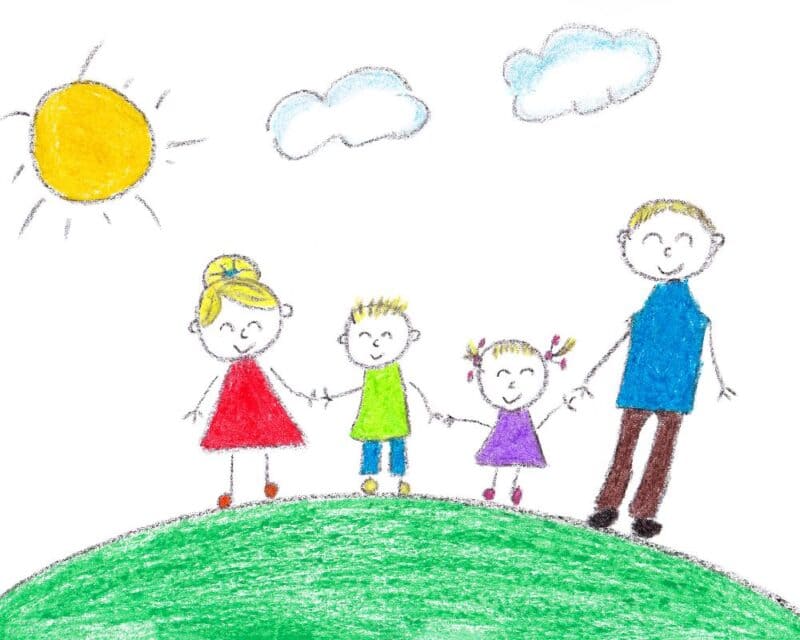
The development of hand-eye coordination and fine motor skills is crucial to a child’s drawing stages, especially during the preschool years. Typically ranging from ages 3 to 5, this period is marked by significant growth in how a child draws and understands the world.
Focus on Drawing Human Figures and Objects
- Drawing Human Figures: At this age, children often start drawing human figures with more detail. They begin to include basic facial features and body parts, moving beyond simple shapes to more defined straight lines and curves.
- Practice with Straight Lines and Shapes: Encouraging children to draw objects with straight lines and simple shapes helps refine their motor skills. This practice is important as it lays the groundwork for more complex drawings in later stages.
The Role of Different Ages and Stages
- Development Stages: Recognize that each child’s drawing development stage is unique. What a three-year-old draws will be different from a five-year-old’s artwork. Each year of age brings new skills and understanding.
- Tailoring Activities to Age: Tailor drawing activities to the child’s age and skill level. For younger children, focus on fun experiences and exploration. For older preschoolers, introduce more structured drawing tasks.
Creating Fun and Educational Drawing Experiences
- Fun Experiences: Make drawing a fun and engaging activity. This encourages children to practice more, naturally enhancing their hand-eye coordination and fine motor skills.
- Drawing People and Real Life: Encourage children to draw from real life. This improves their drawing skills and enhances their understanding of the world and their place in it.
The Importance of Art Activities in Cognitive and Social Skills Development
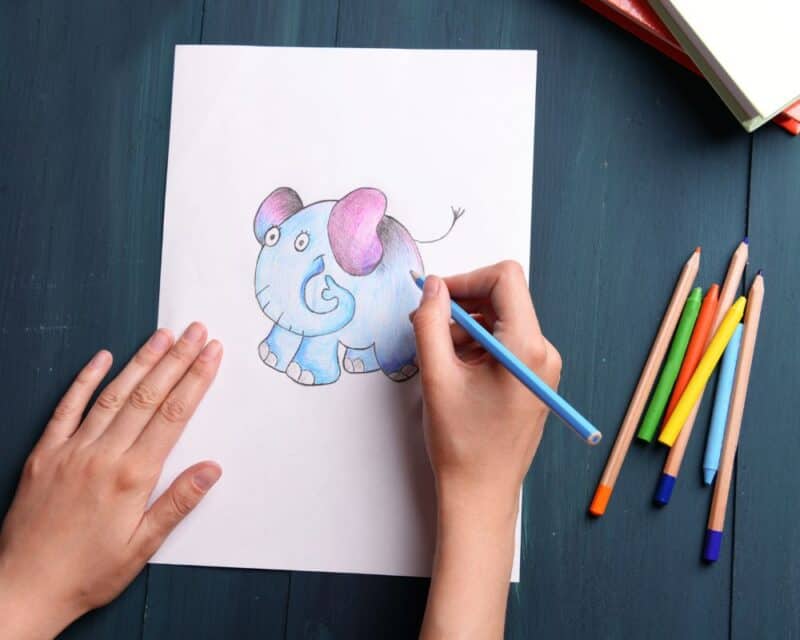
Drawing, particularly of people and real-life scenes, plays a pivotal role in a child’s cognitive and social skills development, especially as they progress through various stages of drawing development.
Cognitive Growth and Sensory Information
- Sensory Development: Engaging in drawing activities provides rich sensory information. For children of all ages, drawing stimulates their senses – sight, touch, and even proprioception (sense of body position).
- Terms of Drawing Development: Understanding these terms helps educators and parents to provide age-appropriate drawing challenges that stimulate cognitive growth. For example, a Waldorf teacher might emphasize the use of value (light and dark) to help children understand dimensions and perspectives.
Drawing Through Different Ages
- Early Years (Up to 8 years): Children learn to represent the world around them during the first stage of drawing development. This is an exciting time as they transition from simple scribbles to more recognizable shapes and figures.
- Middle Childhood (9-12 years): As children grow, their drawings of people become more detailed and realistic, reflecting their increasing understanding of the world.
- Young Adults: For young adults, drawing can be a way to explore different ways of thinking and expressing complex concepts and emotions.
Social Skills Development
- Understanding Real-Life Contexts: Through drawings of people and scenarios, children learn to understand and interpret social situations, roles, and dynamics, which is crucial for their social development.
- Way Children Communicate: Drawing is often a natural way for children to communicate their feelings and thoughts, especially when they might not have the words to express them.
The Role of Art Therapists and Occupational Therapists
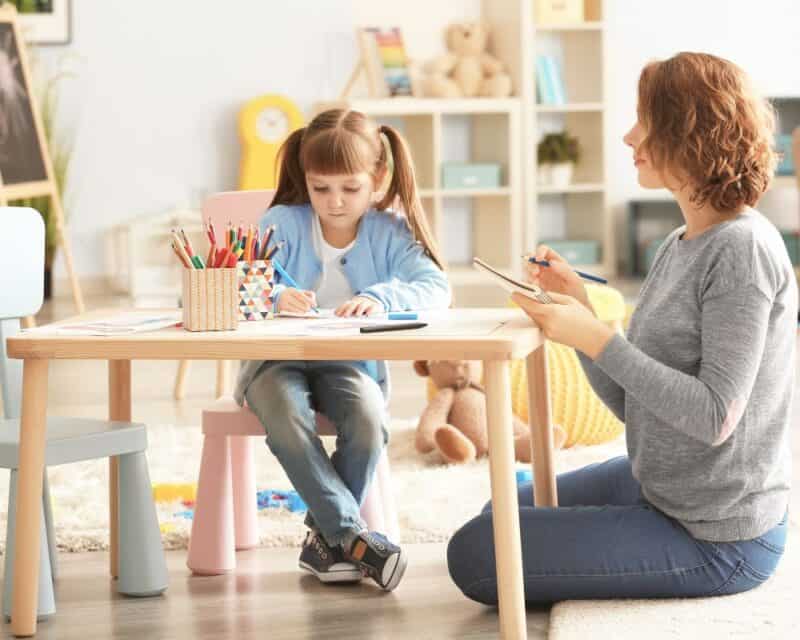
As children progress through different ages in their drawing stages, particularly in the final stage, their artwork can provide valuable insights into their cognitive development and understanding of social concepts such as gender roles.
Developing Advanced Thinking Skills
- Complex Drawings: In the final stages of a child’s drawing stage, typically observed in older children and young adults, drawings become more intricate and detailed. This complexity reflects advanced thinking skills and a deeper understanding of the world.
- Representation of Gender Roles: Drawings at this stage often include more explicit representations of people, including aspects of gender roles. This can be a natural process in which children and young adults express their perception and understanding of societal roles and norms.
Role of Art and Occupational Therapists
- Interpreting Drawings: Art and occupational therapists can play a crucial role in interpreting these drawings. They can provide insights into how a child or young adult perceives and processes information about people, including their understanding of gender roles.
- Identifying Developmental Stages: By analyzing the drawing of a person, therapists can determine a child’s developmental stage. This can be especially helpful in identifying any areas where a child might need additional support or guidance.
The Journey Towards Realism: Pseudo-Naturalistic Stage
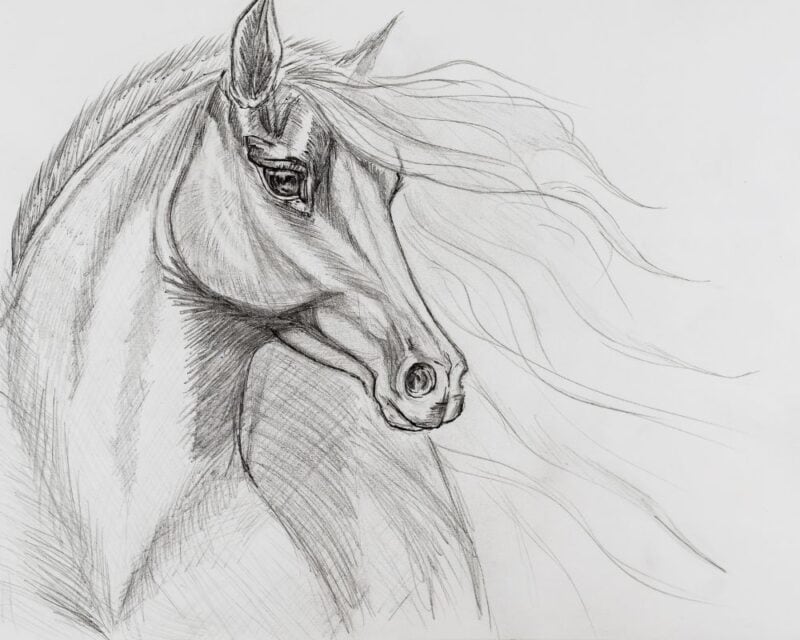
The pseudo-naturalistic stage, a crucial phase in artistic development, typically emerges as children move towards their young adult years. This stage reflects a significant evolution in their drawing skills and cognitive understanding.
Key Features of the Pseudo-Naturalistic Stage
- Increased Realism: During this stage, which usually begins around 9 to 12, children’s drawings show a marked increase in realism. The drawings exhibit a more sophisticated use of space, perspective, and proportions.
- Control and Technique: There’s a noticeable improvement in how children handle art materials. They show good control and experiment with different techniques, adding depth and value to their artwork.
Understanding Development in This Stage
- Different Stages of Artistic Development: Recognizing that the pseudo-naturalistic stage is part of a continuum of artistic development is important. Each stage, from simple scribbles to more complex drawings, contributes to a child’s overall growth.
- Stages of Cognitive Development: This stage also corresponds with significant cognitive development. Children begin to understand and interpret the world more like adults, which is reflected in their artwork.
Conclusion: Valuing Each Stage in a Child’s Artistic Growth
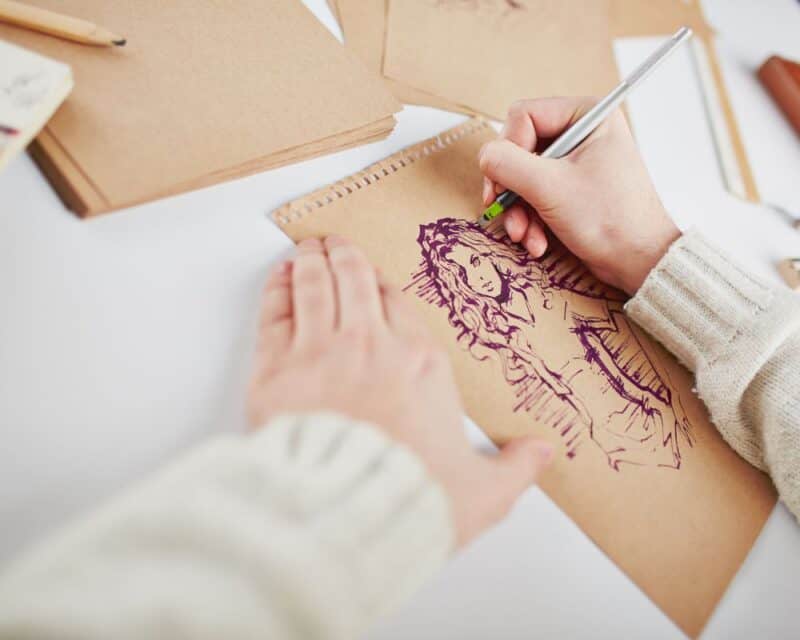
Every child’s artistic journey is unique, progressing through various stages of development at their own pace. Recognizing and understanding these stages, from early scribbles to sophisticated realism in later years, is crucial for parents, educators, and therapists in providing the right support and encouragement.
- Acknowledging Progress and Realism: As children grow, their art evolves in complexity, displaying a higher level of realism and a demonstrated awareness of the concept of space. This progression reflects their cognitive and spatial understanding.
- Incorporating Complex Elements: Older children and young adults often start integrating actual letters and more intricate details into their drawings, indicating a more advanced stage of development.
- Celebrating Each Milestone: Each phase, whether it involves simple lines or detailed scenes, marks an important milestone in a child’s life. Encouraging their exploration of various art materials and celebrating their unique style and achievements is essential.
In nurturing a young artist, it’s not just the end product that matters but the entire process — the smell of the paint, the feel of the crayon, and the joy of creating something new. These experiences are not merely enjoyable moments but integral to a child’s developmental journey, fostering creativity, cognitive skills, and personal expression.
